
The bloodletting therapy in Traditional Chinese Medicine (TCM), also known as “Zhen Ci Fang Xue Liáo Fa” (Acupuncture Bloodletting Therapy). It involves using a three-edged needle, a thick needle, or a small scalpel to puncture or incise specific acupuncture points on the body to release a small amount of blood, thereby expelling internal heat and toxins to treat diseases.
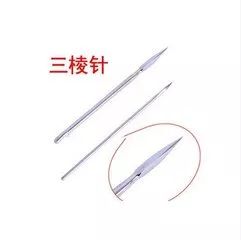
The miraculous bloodletting therapy
The history of bloodletting therapy is long-standing, with ancient sayings such as: “One needle, two moxibustions, three medications.” The traditional bloodletting therapy, known in ancient times as “Qi Mai,” “Ci Luo,” or “Xie Xue,” is commonly referred to as “Ci Xue Liáo Fa” (Bloodletting Therapy) or “Ci Luo Fang Xue Liáo Fa” (Bloodletting Therapy).
It is a unique acupuncture therapy in Chinese medicine that can help to unblock stagnation in the meridians, achieving the principle of “Wǎn Chén Zé Chú Zhī” (remove what is stagnant). It has effects such as invigorating blood circulation, resolving stasis, clearing heat and detoxifying, emergency resuscitation, reducing swelling and pain, and calming the mind.
It is said that Bian Que used bloodletting at the Bai Hui (Hundred Meetings) point to cure Prince Guo’s “corpse syndrome,” and Hua Tuo used acupuncture bloodletting to treat Cao Cao’s “head wind syndrome.” By the Tang and Song dynasties, this therapy had become one of the major practices in TCM.
The New Book of Tang records that the imperial physicians of the Tang dynasty used bloodletting from the top of the head to cure Emperor Gaozong’s “dizziness and inability to see.” The procedure is simple and effective, often resulting in the ability to “immediately alleviate chronic illnesses and suddenly eliminate stubborn diseases,” achieving unexpectedly miraculous effects.
In TCM, the methods of bloodletting therapy are divided into: point puncture (also known as rapid puncture), pricking (commonly used for bloodletting in the chest, back, and behind the ears), slow puncture (commonly used for bloodletting in superficial veins of the elbow and popliteal fossa), and surrounding puncture (also known as scattered puncture, used for bloodletting around skin diseases).

The Efficacy of Bloodletting Therapy in TCM
Modern medical research shows that bloodletting therapy is an effective treatment method for directly improving blood circulation disorders.
Good efficacy and quick results. For example: cerebrovascular diseases, vascular neurogenic headaches, lower back pain, carbuncles and swelling, sciatica, shoulder periarthritis, rheumatic pain, etc. As long as it is a solid condition, the efficacy is particularly good, even miraculous, with a high cure rate and low recurrence rate.
Wide range of indications: According to the theory that “all diseases stem from stasis,” bloodletting therapy can be applied to various conditions, including many non-painful diseases. As long as the bloodletting is reasonable, it will not cause anemia and generally has no side effects.
Note: This method is not suitable for individuals with weak constitutions, pregnant women, and those with poor coagulation mechanisms. It is particularly emphasized that the technique should be steady, precise, and gentle, rather than too forceful, and bloodletting should not be excessive.
Statistics show
Deaths caused by thrombotic diseases account for 51% of total global deaths, far exceeding those caused by tumors, infectious diseases, respiratory diseases, etc.
Thrombosis can be fatal anywhere
The human body is filled with blood vessels; if all the blood vessels in the body were connected, they would stretch over 95,000 kilometers, enough to circle the Earth’s equator more than twice. A blood clot, simply put, is a “blood mass” formed in the blood vessels.
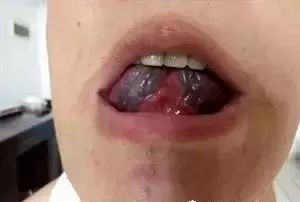
Under normal circumstances, blood clots in the body will naturally dissolve. However, with aging, prolonged sitting, and life pressures, the body’s ability to dissolve blood clots slows down. If blood clots cannot be dissolved in time, they will adhere to the blood vessel walls.
In fact, blood clots are not necessarily fixed in one place; they may detach and flow with the blood.
When a blood clot travels and causes a blockage in a blood vessel, it can lead to acute conditions.
No matter where a blood clot blocks, it is fatal!
People more prone to blood clots
Blood clots can occur at any age and at any time. 99% of blood clots have no symptoms or sensations, making them difficult to detect even during various hospital examinations. Therefore, the following groups should be particularly cautious:
1. People with hypertension
Those who have previously experienced vascular events, hypertension, or dyslipidemia should be especially careful. Among them, hypertension can increase the resistance of small blood vessel smooth muscle, damage the vascular endothelium, and increase the incidence of thrombosis.
2. People with a family history
The formation of venous thrombosis is often related to hereditary coagulation factor abnormalities. Current research shows that genetics is the primary factor.
3. Obese and diabetic individuals
Diabetic patients have multiple high-risk factors that promote arterial thrombosis, which may lead to abnormal energy metabolism in the vascular endothelium, causing vascular damage.
4. Individuals with unhealthy lifestyles
This includes smoking, unhealthy diets, and lack of exercise. Among them, smoking can cause vascular spasms, leading to damage to the vascular endothelium.
5. People who remain inactive for long periods
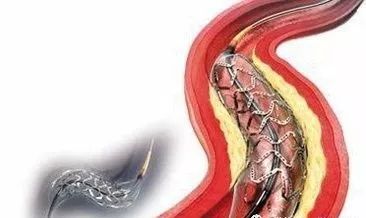
Being bedridden or remaining inactive for long periods are significant risk factors for venous thrombosis. Office workers, teachers, drivers, salespeople, and others who need to maintain a single posture for extended periods are at relatively higher risk.
Those who pay attention to health maintenance know that TCM has a method of bloodletting called sublingual thrombus removal
Bloodletting therapy—sublingual thrombus removal plays an important role
Bloodletting therapy—sublingual thrombus removal technique is an effective treatment method guided by the basic theories of TCM, which aims to expel evil qi through bloodletting to harmonize qi and blood, balance yin and yang, and restore righteous qi.
It can treat various acute and chronic diseases, and often has miraculous effects on many difficult and complicated diseases, stubborn chronic diseases, and strange illnesses.
Indications for sublingual thrombus removal: hypertension, hyperlipidemia, hyperglycemia, cardiovascular and cerebrovascular diseases, cerebral thrombosis, hemiplegia, dizziness, blurred vision, throat obstruction, etc.
In TCM acupuncture, there are two special points under the tongue: the left is Jin Jin (Golden Saliva), and the right is Yu Ye (Jade Liquid). Generally, a three-edged needle is used for bloodletting to treat issues such as “stiff tongue, swollen tongue, oral ulcers, throat closure, diabetes, vomiting, diarrhea, and aphasia.”

1. Blood clots are formed in the body due to the long-term accumulation of blood waste.
For example, patients with hypertension, hyperlipidemia, and hyperglycemia have many thrombotic substances on their vascular walls. It is a systemic root cause, and almost everyone over 40 has it, just varying in amount. This is because from the time a person stops growing, all the food consumed produces waste, and blood does the same. The toxins in the body are all self-generated from what one eats, compounded by modern industrial chemicals, ripening fruits, accelerated growth of animals, and pesticide residues in vegetables, along with various human-induced environmental changes, air pollution, and reduced exercise. Coupled with the rapid development of the modern economy, people experience excessive psychological stress, leading to slower blood flow, which accelerates the production of bodily waste. While food waste can be expelled through the intestines, what about the waste in the blood? A person over 50 years old has at least one kilogram of blood waste, and for those with three high conditions, the blood toxins can be nearly two kilograms. These toxins are deeply hidden in the blood vessels, acting as a time bomb that can destroy your life at any moment.
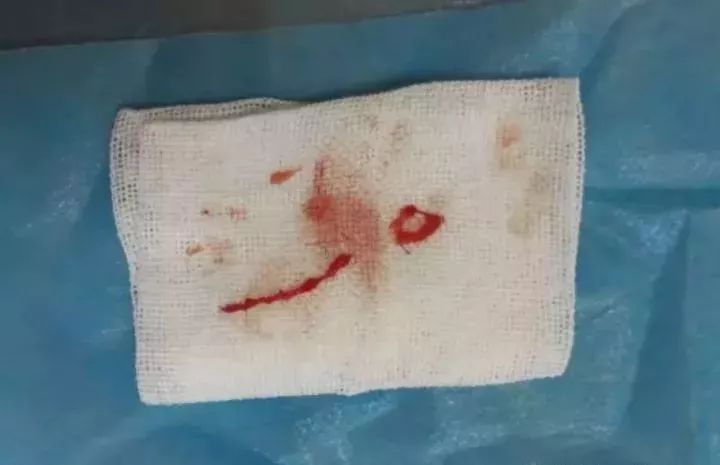
2. The dangers of blood clots
Blood, transported from arteries to veins, does not contain blood waste; only in the veins does it occur. However, once there is unclean blood in the venous blood vessels, it will be transferred to the waste storage through capillaries. Only when the body produces a large amount of waste, and the waste storage cannot hold any more, will the venous blood become viscous. Once venous blood becomes viscous, it indicates that there are many blood toxins in the body that need to be cleared. Otherwise, if it continues to develop, the viscosity will accumulate, leading to blood stasis. When there is too much blood stasis, it will produce thrombotic substances and turn into blood clots. Once blood clots form, wherever they block, there will be pathological changes, such as cerebral thrombosis. A blockage in the blood will cause the viscous blood to flow smoothly, and blood stasis will quickly accumulate, gradually increasing in size, forming dead knots and necrosis. If a blood clot blocks the heart, it is called myocardial infarction. In short, wherever it accumulates, that is where the disease occurs. If it blocks the veins in the thigh, severe cases may require amputation. If blood clots are not cleared and expelled in time, life will be threatened.
3. The benefits of removing blood clots
Blood clots are the greatest enemy in the cardiovascular system; their aggregation can destroy your life at any moment. The only solution is to remove them. Other methods only alleviate the situation. Once blood clots form, no medication can dissolve them; contemporary medicine refers to this as a stubborn disease. Now, through bloodletting therapy, combined with special Chinese herbal medicines, blood clots can be expelled along with blood stasis, fundamentally curing the issue.
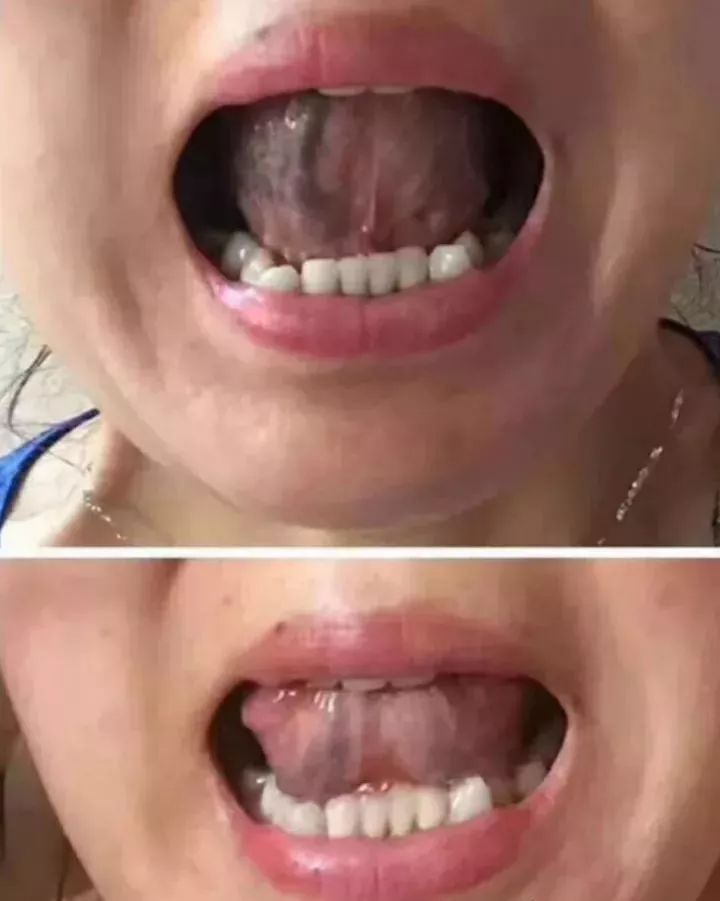
4. If there is no waste in the blood,
-
There will be no cardiovascular diseases or three high conditions.
-
It will delay aging.
-
There will be no weakness or fatigue.
Once blood viscosity is detected, one should control their diet, eat more vegetarian food, and reduce animal meat intake to avoid accelerating the production of blood waste. While removing blood clots, a large amount of blood waste, such as blood stasis and blood viscosity, can also be expelled, which has significant preventive and therapeutic effects on the three burners; liver, lung, heart, pancreas, and islet cells, etc. Thus achieving prevention of diseases before they occur and curing the root causes of existing diseases.
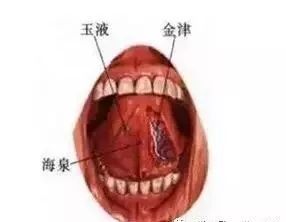
What are the benefits of removing blood clots?
-
First, prevent cerebral thrombosis and myocardial infarction.
-
Promote recovery from sequelae of cerebral thrombosis and myocardial infarction.
-
Prevent recurrence of blood clots and myocardial infarction.
How can blood clots be removed from the blood vessel walls?
There are two types of blood clots: one is caused by the detachment of plaque from the blood vessel wall, leading to cerebral thrombosis; the other is thrombotic floating substances.
Why can blood clots cause hypertension?
Excessive accumulation of thrombotic plaques and floating thrombus (thrombus storage) leads to blood flow obstruction, increased vascular wall tension, and elevated blood pressure.
Does removing blood clots help the recovery of the brain’s nervous system?
Yes, because removing thrombotic substances can reduce or avoid the recurrence of blood clots or cerebral infarction, alleviate nerve compression or continued damage, and reduce functional impairments in the upper and lower limbs.
Q: Will blood sugar decrease after removing blood clots in diabetic patients?
A: Blood clots can induce diabetes, and removing thrombus has a controlling effect on the initial onset of diabetes.
Q: Is anesthesia required for sublingual thrombus removal? Will it hurt?
A: No anesthesia is needed, and it will not hurt.
This technique is currently a world-first, and no other medical methods can achieve such thorough removal of blood clots!
Q: What is the difference between vascular cyanosis and blood toxicity?
A: Vascular cyanosis has two causes: one is a reflection of blood stasis caused by wind, dampness, and cold; the other is caused by excessive accumulation of toxins (waste) in the vascular walls.
People often see patients with hemiplegia, and they seem very unfortunate. In fact, this is caused by vascular occlusion compressing nerves, which is perceived as frightening.
However, I personally believe that what you see is not terrifying; the most terrifying thing is the occlusion that you are unaware of, such as myocardial infarction. You have no way of predicting this; when you realize it, it may be too late. This is because the time left after occlusion is very short, and blood can form a clot in about five minutes, leading to immediate death.
For example, some film stars, such as Hou Yaowen and Gao Xiumin, were lively one day and suddenly gone the next day, without any awareness; they had no nerve sensations, and they did not know they had an occlusion. If the occlusion occurs in the cerebral blood vessels, it leads to cerebral thrombosis; if it occurs in the heart, it causes myocardial infarction; if it occurs in the liver, it is called liver thrombosis; if it occurs in the lungs, it is called pulmonary thrombosis. The main symptoms are chest tightness, thirst, and discomfort in the chest, indicating that liver or lung thrombosis has occurred. However, since it does not compress the nerves, you do not feel any discomfort, which is even more frightening!
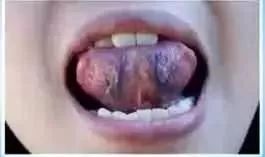
The Main Efficacy of Sublingual Thrombus Removal
1. Remove waste and thrombi from the brain, organs, and blood, restore the physiological functions of various organs, promote detoxification, cellular repair, and regeneration, achieving the goal of curing various diseases.
2. Prevent and treat the three high conditions (hypertension, hyperlipidemia, hyperglycemia).
3. Prevent and treat cardiovascular and cerebrovascular diseases.
4. Treat long-term headaches, stubborn insomnia, and vertigo.

The treatment scope of sublingual thrombus removal
The adjustment range is related to chronic diseases of the blood system. For example, various cancers, malignant tumors, three high conditions, diabetes, and chronic diseases of the heart, liver, spleen, lung, and kidney. It is especially effective for those in sub-health states caused by improper lifestyle, diet, and work stress! Congenital diseases, pediatric diseases, and trauma are not included in the adjustment range.
Indicators of adjusted diseases show significant recovery:
1. Gastric cancer,
2. Rectal cancer,
3. Avascular necrosis of the femoral head,
4. Hepatitis B and C turning negative,
5. Systemic lupus erythematosus,
6. Lumbar disc herniation,
7. Osteophytes,
8. Hyperlipidemia,
9. Hyperglycemia,
10. Syphilis,
11. Genital warts,
12. Gout,
13. Premature menopause, etc.
Indicators of adjusted diseases show significant changes:
1. Lung cancer,
2. Liver cancer,
3. Uterine cancer,
4. Prostate cancer,
5. Breast cancer,
6. Uremia,
7. Coronary heart disease,
8. Diabetes,
9. Hypertension,
10. Hypotension,
11. Psoriasis, etc.
Sublingual thrombus removal medical knowledge Q&A
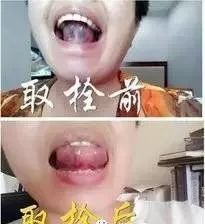
Sublingual thrombus removal medical knowledge Q&A
1. What are the causes and pathological changes of cardiovascular diseases? The causes of the disease are the imbalance of lipid metabolism and phospholipid ratios, with increased deposition of cholesterol, triglycerides, and free radicals in the arterial intima leading to non-bacterial inflammation, causing atherosclerotic changes and roughening of the intima; secondly, due to the roughness of the intima and the continuous increase of metabolic products, lipid metabolic products gradually thicken on the rough surface, causing stenosis of the vessel neck or increased blood flow resistance, increased vascular wall tension, and secondary hypertension.
2. How many types of thrombotic substances (floating substances) are there? What are the components of blood clots? There are two types. One is the detachment of plaque (cholesterol) from the blood vessel wall; the other is thrombotic substances formed from floating cholesterol, triglycerides, fibrin, and free radicals, which can be in the form of string-like (worm-like) or clumped thrombi.
3. Where can blood clots occur? Blood clots can occur in any tissue or organ of the body. Heart, brain, kidneys, eyes (retinal thrombosis), can induce diabetes, avascular necrosis, capillary rupture, and subcutaneous bruising.
4. Why are arterial blood clots removed from the veins? Thrombotic floating substances are formed in the veins. When the thrombus storage reaches its limit, floating substances enter the bloodstream, causing thrombosis. Therefore, blood clots are removed from the veins. Additionally, thrombi from the arterial walls can detach, causing thrombosis.
5. Can patients who faint at the sight of blood undergo thrombus removal surgery? If not, are there other methods? First, fainting at the sight of blood is called blood phobia, which can cause low blood pressure and increase the risk of cardiovascular blockage and life-threatening situations. Second, one can use Qing Tuo Kang capsules to invigorate blood circulation and emulsify thrombotic substances.
6. How many people have undergone this surgery, and what are the results? Currently, tens of thousands of people in China have undergone thrombus removal, with a 100% effectiveness rate, over 95% improvement rate, and over 75% cure rate.
7. Are there any precautions after thrombus removal surgery? After thrombus removal, within two hours, one should not speak, drink water, or eat. Avoid local infections; generally, there is no need for anti-inflammatory injections, but diabetic patients and those with weak constitutions may require anti-inflammatory injections or fluid supplementation.
8. Is there a genetic relationship with blood clots? Yes, there is a direct relationship between blood clots and genetics.
9. Is the formation of blood clots related to diet? Yes, it is related to diet; people who consume high-fat and sugary foods are more prone to cerebral thrombosis.
10. Can lower limb blood clots be removed? Yes, lower limb blood clots can be removed. There are two types: deep vein thrombosis (also known as arterial thrombosis) and superficial venous thrombosis (also known as phlebitis or varicose veins).
11. Are varicose veins in the lower limbs related to blood clots? Yes, they are caused by damage to the lower limb venous valves, leading to obstruction of venous blood return, causing prolonged blood retention and increasing the risk of thrombotic factors.
12. What is the impact of blood clots on cardiovascular diseases? Blood clots are the greatest enemy of cardiovascular diseases; they can cause cerebral thrombosis and myocardial infarction, leading to neurovascular headaches and angina.
13. What is the impact of blood clots on the kidneys? Blood clots can lead to local embolism of the renal arterioles, resulting in renal infarction or renal necrosis.
14. If blood clots have been removed from the lower limbs, is it necessary to remove thrombus from under the tongue? Yes, it is necessary. Removing blood clots from the lower limbs only addresses the issue of lower limb venous thrombosis, while sublingual thrombus removal addresses the issue of blood clots in the entire body.
15. Why can blood clots cause hypertension? Blood clots and floating thrombus (thrombus storage) accumulate excessively, leading to blood flow obstruction, increased vascular tension, and elevated blood pressure.
16. If someone has had a stroke for 20 years, will removing blood clots help the recovery of the brain’s nervous system? Yes, because removing thrombotic substances can reduce or avoid the recurrence of blood clots or cerebral infarction, alleviate nerve compression or continued damage, and reduce functional impairments in the upper and lower limbs.
17. Why do blood clots occur after traumatic injuries from accidents? After compression, deep or superficial veins are easily damaged, leading to the formation of thrombotic factors. When thrombotic substances detach, they can cause myocardial infarction or cerebral infarction.
18. Can sudden inability to speak after a stroke be completely cured after thrombus removal? Yes, it can achieve complete recovery.
19. Why does a sudden pain in a specific area while sleeping lead to local discoloration upon waking? This is caused by capillary thrombosis and capillary bleeding.
20. What are the benefits of removing blood clots? First, it prevents cerebral thrombosis and myocardial infarction;
Second, it promotes recovery from sequelae of cerebral thrombosis and myocardial infarction;
Third, it can cure sequelae of myocardial infarction and cerebral thrombosis.
21. Is numbness in the hands and feet related to blood clots? Numbness in the hands and feet is a precursor reflection of cerebral thrombosis.
22. What is the difference between vascular cyanosis and blood toxicity? Vascular cyanosis has two causes: one is a reflection of blood stasis caused by fright and rheumatism; the other is caused by excessive accumulation of toxins (waste) in the vascular walls.
23. Can blood clots only be removed once in a lifetime? For individuals with unhealthy lifestyles, it can be chosen to remove again every 5-8 years; for those with healthy lifestyles, it can be chosen to remove again every 10-20 years. Removing floating thrombi is to prevent the recurrence of blood clots to ensure that one does not suffer from cardiovascular diseases in their lifetime.
24. What should be eaten before thrombus removal to aid the process? One can take blood-invigorating and thrombolytic medications in advance; thrombus removal within one hour can achieve the expected effect.
25. Are there any harms to the body after removing blood clots? It is beneficial and harmless.
26. Does thrombus removal surgery help those already suffering from cerebral thrombosis and myocardial infarction? Yes, it helps; first, it can prevent the recurrence of blood clots and myocardial infarction; second, it can alleviate or cure sequelae of cardiovascular diseases.
27. Is sublingual thrombus removal for prevention or treatment of cardiovascular diseases? It is effective for both.
28. How can blood clots on the blood vessel walls be removed? Blood clots are of two types: one is caused by the detachment of plaque from the blood vessel wall; the other is thrombotic floating substances. Plaques on the blood vessel walls can be dissolved using special emulsifiers before removal.
29. Can blood clots be completely removed? First, those that have not formed thrombotic substances cannot be removed; second, those with undetached plaques cannot be removed.
30. Can diabetic patients undergo thrombus removal? Yes, mild to moderate diabetic patients can undergo the procedure; those with severe immune deficiency and peripheral neuropathy cannot.
31. Can patients with heart bypass or stents undergo thrombus removal? Yes.
32. Why do some people have more thrombus removed than others? The amount removed is determined by the viscosity of the blood and the amount of thrombotic substances.
33. Why is thrombus removal performed under the tongue? 98% of the organs in the human body have mobility, except for the head. Therefore, blood stasis, blood clots, and blood viscosity accumulate in the head. The areas where blood waste accumulates in the head are concentrated under the two points: Jin Jin and Yu Ye. If the blood waste in these points accumulates too much, it can lead to cardiovascular diseases. If we release the blood waste from the brain in advance, allowing qi and blood to flow smoothly in the heart and brain organs, various cardiovascular diseases will not occur.
34. Is there any danger in using a small needle knife for sublingual thrombus removal? The small needle knife sublingual thrombus removal method is a traditional TCM thrombus removal therapy with a history of over a hundred years. In recent years, the expert team of the Chinese Health Management Network has performed over 12,000 cases without any failures. This therapy is conducted by the expert team of the Chinese Health Management Network, ensuring 100% medical safety for those undergoing thrombus removal. This technique uses natural TCM methods and applies special minimally invasive techniques to expand and soften blood vessels through the use of specially formulated Chinese herbal medicines.
35. Why is thrombus removal not performed in hospitals? Where can it be done? Sublingual thrombus removal is a minimally invasive technique that does not require surgery. The environmental requirements are not very high, and the oral environment is not prone to infection, so this technique can be performed outside of hospitals.
36. Why can blood clots cause hypertension? Excessive accumulation of thrombotic plaques and floating thrombus (thrombus storage) leads to blood flow obstruction, increased vascular tension, and elevated blood pressure.
37. Does removing blood clots help the recovery of the brain’s nervous system? Yes, removing blood clots significantly aids the recovery of the brain’s nervous system, helping to prevent the occurrence of cerebral infarction or cerebral hemorrhage and alleviating nerve compression or continued damage, reducing functional impairments in the upper and lower limbs.
38. Is anesthesia required for sublingual thrombus removal? No anesthesia is needed, and it will not be painful.
39. What is the most suitable age group for thrombus removal surgery? The best age group for thrombus removal surgery is individuals over 40 years old. Healthy individuals in this age group should remove the blood clots accumulated in their blood vessels from the first half of their lives to ensure they do not suffer from cardiovascular diseases in the next 15-20 years. Young people over 30 with obvious symptoms can also undergo thrombus removal.
40. What are the methods for detoxifying the body? 1. Clear cellular toxins: through sweating or taking medications that induce sweating, toxins can be expelled from the cells. This method only clears impurities and waste between cells. 2. Clear intestinal toxins: by taking medications that cause strong vibrations or movements in the gastrointestinal tract, adhering waste can be expelled. 3. Clear blood toxins: there is a practice abroad called blood washing, which costs about 450,000-500,000 USD. China has also introduced this technology, with a minimum cost of 200,000 RMB for one blood wash. However, this method cannot fundamentally solve the problem; it merely extracts blood from the vessels, separates and filters it, and new waste will accumulate shortly thereafter.
41. The relationship between thrombotic substances and the causes of cardiovascular diseases
Patients with hemiplegia have limited mobility and are difficult to cure. In fact, this is merely due to vascular occlusion compressing nerves, which is not terrifying. The most terrifying thing is the occlusion that you are unaware of, such as myocardial infarction. You have no way of predicting this; when you realize it, it may be too late. Blood can form a clot in about five minutes, leading to immediate death. For example, some film stars, such as Hou Yaowen and Gao Xiumin, were lively one day and suddenly gone the next day, without any awareness; they had no nerve sensations, and they did not know they had an occlusion. If the occlusion occurs in the cerebral blood vessels, it leads to cerebral thrombosis; if it occurs in the heart, it causes myocardial infarction; if it occurs in the liver, it is called liver thrombosis; if it occurs in the lungs, it is called pulmonary thrombosis. The main symptoms are chest tightness, thirst, and discomfort in the chest, indicating that liver or lung thrombosis has occurred. However, since it does not compress the nerves, you do not feel any discomfort, which is even more frightening!
42. Does the human body have a thrombus storage? Traditional Chinese medicine has long discovered the mystery of the organs that store blood waste in the body. The human body is as marvelous as the universe; each organ has its own functions and roles, and they all have “warehouses” for storing waste. For example, the waste from bone marrow is stored in the joint cavities, and bone marrow waste or thrombotic substances are stored in the joint cavities. If not cleared, it will lead to joint pain and lower back pain. For blood waste, it is stored in the sublingual posterior cavity, also known as the “thrombus storage.” The thrombus storage is located under the tongue.
There are two cavities under the tongue: one is called the anterior cavity, which contains “Jin Jin Yu Ye” (Golden Saliva and Jade Liquid), which plays a role in sterilization and helps to refine food; the other is called the posterior cavity, which stores the body’s venous blood waste. Venous blood, known as “living blood,” has not been purified; it is derived from the nutrients absorbed through the food chain. When blood flows through the thrombus storage, there is a partition in the storage, and all venous blood must pass through the sublingual cavity. After the blood circulates in, it first flows to the thrombus storage, where a membrane filters out the impure blood, allowing pure blood to pass through and flow into the venous blood vessels. When blood waste accumulates to a certain amount, it breaks through this membrane, and the blood waste will flow into the blood vessels and various organs in the body. At this point, the most frightening thing is the formation of cerebral thrombosis. This is because the brain has 1861 nerves, and when a certain cerebral blood vessel is blocked, it will swell and compress the surrounding nerves, leading to hemiplegia, paraplegia, or complete paralysis, causing inconvenience in life, inability to care for oneself, and a decline in quality of life.
43. Is it true that patients with critical illnesses who have only three months to live can be cured? Traditional Chinese medicine dares to say this. The purpose is to encourage those who have lost hope for life and are ready to give up treatment opportunities to cherish life and establish a belief in fighting against diseases. They should not easily give up treatment opportunities until the last moment! As long as one faces the disease bravely and optimistically and gives the doctor enough time for treatment, even just three months can create a miracle of recovery for critically ill patients.
44. Does thrombus removal surgery help with beauty? Thrombus removal surgery is particularly beneficial for beauty! In fact, symptoms such as age spots, wrinkles, and other signs are fundamentally caused by the long-term accumulation of toxins in the body. As long as those toxins are removed, combined with proper maintenance, it is entirely possible to restore a radiant appearance! In many cases treated by traditional Chinese medicine, many women who have lost their beauty due to various reasons have quickly regained their former glow after undergoing thrombus removal, with some even appearing ten years younger! This is the best therapy that cannot be compared to simple beauty methods today.

